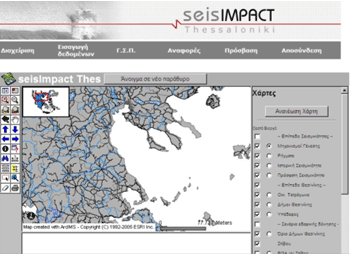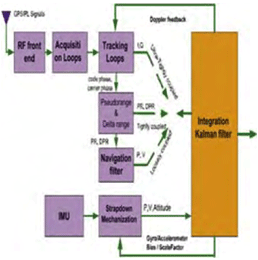Articles in the Articles Category
We published a circular by Central Board of Excise and Customs, Government of India that came out in April (Coordinates, May 2007).
The circular classifies high technology featured mobile phone including GPS as a secondary feature as mobile phone.
That implies four per cent custom duty rather than 34 per cent as applicable to …

Greece has suffered many times from big earthquakes that caused human victims as well as big damage to public and private infrastructure. However, the 1978 earthquake in Thessaloniki (Mw = 6.5) motivated the beginning of a more systematic confrontation of the impact of such phenomena. This happened because it was the first time that a powerful earthquake affected a big modern city of roughly one million of residents. Thessaloniki presented the formal characteristics of Greek urban built environment: buildings with 4 to 8 storeys, large population in numbers and density, mixed land use, traffic problems and lack of effective planning of management of natural catastrophes. After the Thessaloniki earthquake, a situation of chaos was created due to the panic, the destructions, the lack of information and the innumerable calls on help, but also on control of static condition and damage of buildings. By that time, there was no specific procedure for the inspection of buildings and infrastructure. However, after the first period of embarrassment, the state agencies reacted. Inspection forms were designed, printed and distributed during the first days after the earthquake. The buildings were inspected by two-member teams of civil engineers in order to be classified in categories with regard to their damage and usability. These paper inspection forms constitute a valuable database concerning the impact of the earthquake to the buildings of Thessaloniki.

SOME of the earliest known maps were made in Iraq which was drawn during 2400 BC for the purpose of land taxation. A Roman map dating 350 AD showed such topographical features as roads, cities, rivers and mountains. Although the basics of land surveying were known but the large scale maps before 16th century were limited to cities and other small areas. Up to the middle of 16th Century, there was little real knowledge of the geography of the most part of the world.

Inertial Navigation Systems (INS) are based on accelerometers and gyroscopes for position and attitude determination. Thus, INS is self-contained and autonomous. This makes INS an optimal option to be integrated with GPS, as both systems can complement each other to enhance positioning performance (Greenspan, 1996). On the one hand, the advantages of INS include high positioning (and attitude) update rates, and high short-term accuracy, both helpful in bridging the signal gaps between the GPS signal sampling epochs and the gaps due to signal outages. On the other hand, however, a major drawback of INS when operated as a stand-alone system is the time-dependent growth of systematic errors, which can be calibrated by GPS ranging measurements with consistent accuracy.
August 2007
GIS 14 Conference
14-15 August 2007
Vietnam
2nd Indonesian Geospatial Technology Exhibition
29 August – 1 September
Bakosurtanal; Jakarta
http://www.geospatial-exh.com/
September 2007
First International Summer School on Global Navigation Satellite Systems
Sep 02 – 09 2007
Berchtesgaden, Bavaria, …
Two years ago, we had a dream.
We started on a mission.
With con? dence and conviction.
Set out on a journey of positioning, navigation. And beyond.
Discussing, deliberating and debating
We navigated through technology and took a position.
This month, the 25th issue, it is time for us to think
What we have achieved. what more could have been accomplished.
It is …

To create no residual global rotation with regards to the crust in time evolution in orientation, IERS in the first ITRF88 retained the BIH Conventional Terrestrial System (CTS) and its Conventional Terrestrial Pole (CTP) 1984.0. Since then, it has realized the same “Pole”. However, IERS changed the name “CTP” to International Reference Pole (IRP).
Historical Start
The Earth’s first Terrestrial Reference Frame (TRF) was called Conventional International Origin (CIO) 1905 where the mean orientation of the Z-axis was defi ned by International Latitude Service from six years of observations between 1900 to 1905 (Note: There is NO other “CIO” ever defi ned). The records are not clear whether ILO ever provided a specifi c defi nition for the X-axis and/or the zero meridian.

Mission of National Geographic?
The mission on National Geographic is “the increase and diffusion of geographic knowledge” taken more broadly it also entails inspiring people to care about the planet.
What kinds of maps are prepared? What’s so unique about them?
We create a variety of political, thematic, physical, and topographic maps. With few exceptions …

What is the potential of high resolution imageries?
There has been a great increase in awareness about high resolution satellite and aerial imagery. The credit goes to the players like Microsoft Virtual Earth, Yahoo, and Google Earth. In many countries nowadays, even kids talk about on-line imagery and maps. It is bringing …








 (5.00 out of 5)
(5.00 out of 5)